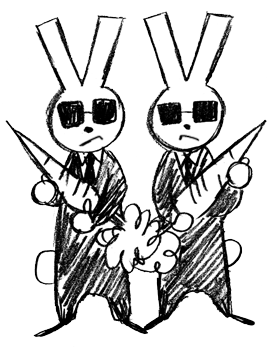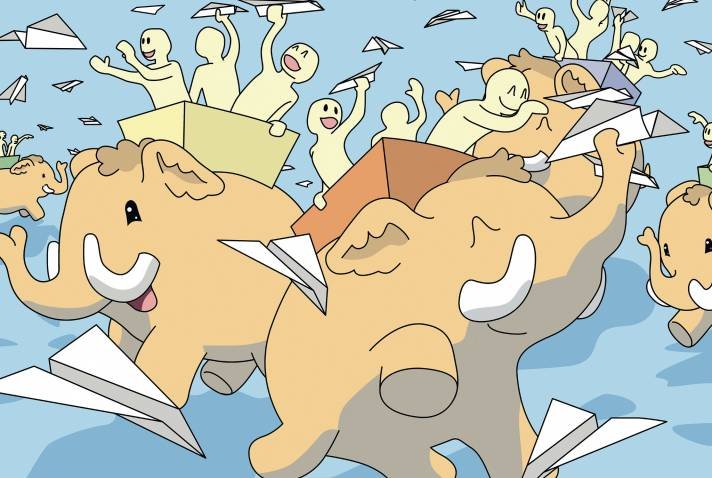The #OGB pushes that the bulk of the voice comes from those who run the #Fediverse, the people who run/support the instances. The people who build the tools also get a say, as do support orgs and events, and the users who will be spread widely get a say, but their power is diluted by the much larger numbers involved.

This working practice comes from 30 years of building from The Tyranny of Structureless tick box list https://unite.openworlds.info/Open-Media-Network/openwebgovernancebody/wiki/03.-The-Tyranny-of-Stucturelessness That code being quite “anti-human” is an interesting challenge, and it’s important to figure out how to get the humane “mess” in a coding process that is based on being “exact” and in control #OGB

The #OGB project is grounded in lived experience, and it’s a way out of this mess. We cannot keep using traditional institutions. We have to stop the #techcurn if we are going to use #openweb tech for social/ecological change/challenge, and we need to think about this now.
The #OGB project is about developing better ways of having “trust” based conversations and “trust” based “governance” in the #openweb. The project is built from hundreds of years of on the ground organizing that has shaped every “freedom” we enjoy and is done in a #KISS approach. The #OGB is a #fedivers native way of working, NOT a #mainstreaming way, and it comes from directly working, setting up, and solving recurring problems at hundreds of direct action protest camps.
The #OGB focus on what we know works, as at the moment, almost nothing works for social good. The #OGB project is what is needed, a voluntary cooperative and collaborative alliance that is native to the #fediverse.
The thinking is that we need to put a stop to the #techchurn as we have piles of #techshit already to compost, that #nothingnew is a hashtag for this.

It’s not the goal of the #OGB project to create an organization that tells everyone what protocols and standards to use in the #fediverse. The #OGB project is about developing better ways of having good “trust” based conversations and “trust” based “governance” in the #openweb

To sum up, the current working models of “governance” in open-source projects are monarchy, aristocracy and oligarchy. This is the rock star developer, the coders and the funders. It should be obverse to anyone that 99.99% of people are missing from this feudalistic ideal of “governance”.
Democracy is the basic foundation of our shared modernity.
WHY DO WE PUT UP WITH THIS MESS IN TECH?
Let’s take a different path, please #OGB
Q. that is an optimistic projection
A. I have no illusion that the normal shitty behaver of fucking people over and being a prat will happen, but the codebase is designed to mediate this crap behaver for better outcomes 🙂
#OGB “permissionless” is an important word that needs some thought. The body is made up of three different, balanced groups: stakeholders, users, and affiliate stakeholders. Anybody can become a stakeholder by setting up and running an active instance, and users are self-explanatory. That affiliate stakeholders are a little more complex and are treated differently, and it’s up to the body itself to decide if they play an active and useful role.
That nothing in this is top-down, elitist, discriminatory, or undemocratic, and it’s #KISS and looks safe to the “normal world” while being native to the #fediverse and its roots. All the coding is #4opens, based on #activertypub.
With #OGB, it’s important not to get lost in the #processgeeks and their dogmatic love of #formalconsensus, as that’s a dead end and has been for the 30 years of activism and coding tech. It’s important to keep the #OGB both #KISS and human, understandable. The #OGB is native “governance” and federates in the same way as the projects it “governs”. That this approach is counterintuitive to mainstream ideas and “common sense,” but that’s not necessarily a bad thing.
This approach has worked to some extent, as seen in the “#Fediverse” as a living example, working to scale small to bigger. There will be lots of “smoke,” and help is needed to keep the project clear of this mess. We have to overcome our #stupidindividualism to have a hope of a better world.
#OGB To remind you that the need for “governance” came out of a practical problem where the #activitypub community is made up of “cats” who were doing seminars outreach to powerful #EU Eurocrats on why they should be interested in #activertypub. #OGB is designed to be messy and not tidy, and it’s a “governance” of a disorganization, not a traditional power structure. “governance” can cooperate with more formal models of governance like traditional cooperatives.















